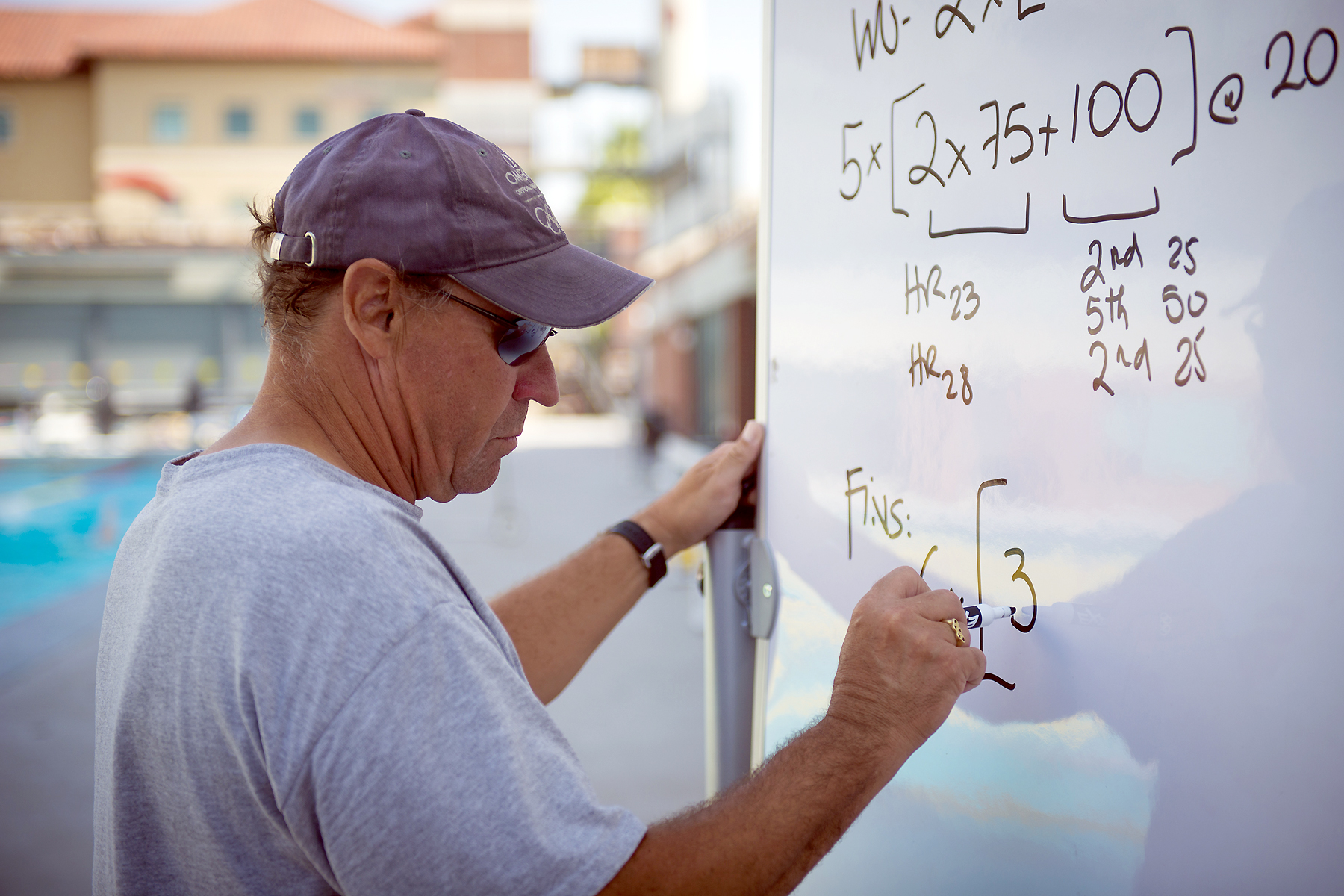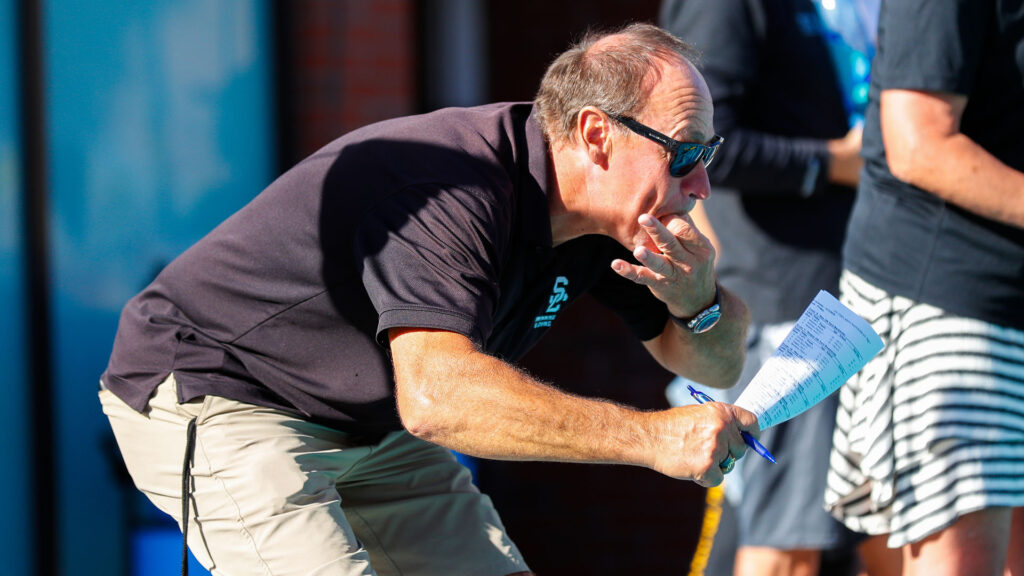Traditional periodisation has four phases (preparation, precompetition, competition and active rest phases). Swimming is different to other sports because it is held in a water environment which is governed by a different set of physical rules than land based sports. For this reason Dave Salo modifies how he periodises a season for his swimmers.
In his book with Scott Riewald, Complete Conditioning for Swimming, Dave Salo has a good chapter summarising how he structure’s a swimming season.
This is the eighth article in my series about Periodisation (English spelling with an ‘s’, American spelling is traditionally with a ‘z’) and the methodologies from coaches that guided my early philosophies around periodisation of training seasons and event build ups. Have a read of last weeks article about Matt Fitzgerald and what he recommends from in 80/20 Running and 80/20 Triathlon:
Periodisation is governed by the principles of progressive overload and general adaptation. The body will respond positively to an increase in demands placed on it, however the body must also receive adequate rest to allow the body to recovery and adapt to the stimulus provided to it.
Benefits of Periodisation
There are a number of benefits of periodising training. The biggest and most significant reason to periodise training is to ensure the athletes peak at the correct time or times of the year for the most important or significant events.
It also allows you to structure the training to develop all the attributes that a swimmer requires (endurance, strength and power) appropriate for their events. By periodising the training these gains will be greater than if the swimmer did not engage with a periodised training plan.
Periodisation adds variety to training and can increase enjoyment in the training, whilst simultaneously preventing performance plateaus.
From a coaching perspective it provides structure and a logical progression to the training.
There is a reduced risk of overtraining and burnout by the variety of stimuli it provides and it aids with injury prevention by providing opportunities for rest and recovery.
Phases of Periodisation
The four traditional phases of periodisation:
- Preparation phase;
- Precompetition phase;
- Competition phase; and
- Active rest phase
Have been renamed by Dave Salo and a fifth phase added to adapt the principles specifically for swimming.
His five phases are:
- Preliminary phase;
- Training phase;
- Competition phase;
- Championship phase; and
- Active rest phase.
Preliminary Phase
The preliminary phase will commence the season and will last for several weeks.
The goal of this phase is to develop consistency in training, regain a feel for the water, as well as developing the warm up and precompetition routines.
This phase is a good opportunity to include nonswimming conditioning. Dave Salo gives examples of Ultimate Frisbee & Soccer or Association Football as great conditioning tools because they are more play like in structure, rather than pure running. These will provide a more diverse range of intensities and are more dynamic in nature for the swimmers.
This phase is also the perfect opportunity to develop technique and efficiency across the strokes. Improvement in technique can bring significant enhancement in swimming performance. This phase is an opportune time to enhancing technique without being compromised by fatigue.
Training Phase
The aim of this phase is to build a base level of fitness and muscular endurance.
This phase will often involve the highest volume of training in this phase (both in the pool and dryland).
Typically, this phase will last for six weeks , but an even longer block of training (8 weeks or more) can be better.
This phase serves as the foundation to develop power and swimming specific strength.
In the water some faster paced efforts can be done daily, as long as good technique and proper stroke mechanics is emphasised.
For strength training use use a moderate resistance and a higher number of repetitions to build cardiovascular fitness and muscular endurance.
If there are some low-key or minor meets occurring during the phase there is consideration for simply training through them.
Competition Phase
This is the main part of the competitive season building towards the major championships.
During this phase training becomes more specific to the key events and strokes of the swimmers.
There should be an emphasis on fast swimming every day and building race-specific speed and mechanics (such as stroke rates and cycle counts).
There should still be an aerobic component to training, the focus is more on matching the intensity and work-to-rest ratio that replicate a race.
There is s shift in the strength training to develop more strength and power. Volume will decrease, as the intensity is lifted up with more power-based exercises.
This phase should last four to six weeks.
Championship Phase
Within this phase is the final few weeks leading into the major championship where the swimmers aim to achieve their peak performance.
The focus of this phase is recovery and energy replenishment, as well as fine-tuning the swimmer’s performance.
Training should be as specific as possible with race-like intensity and stroke rates.
Research indicates that peak performance can only be maintained for no longer than three weeks. After that performance begins to decrease. To boost it back up you’ll need to return to training loads achieved during the Training Phase or Competition Phase.
Active Rest Phase
This occurs after the Championship Phase when swimmers/athletes should take a mental and physical break from intense training.
What is NOT is a time of phsyical inactivity. Aerobic exercise and cross training should be done to maintain a level of fitness. Dave Salo recommends swimming every second day to maintain feel for the water, but these can be low key, non-structured workouts. Water Polo is a great way of combining fun and swimming as a non-structured workout.
Summary
The break down of the season for a swimmer is slightly different than for land based sports. However the methodology is similar. Develop the routine of training and grow and develop the base level of fitness on which to build higher intensity training. As you move closer to the main competitive events the training becomes more specific.
From more powerful strokes to quicker turns, propel yourself to improved times with Complete Conditioning for Swimming.
This multidimensional training program uses fitness assessments to tailor strength, endurance, and flexibility exercises to each swimmer’s individual needs.
Dave Salo, coach of Olympic medalists Rebecca Soni, Lenny Krayzelburg, Aaron Peirsol, Amanda Beard, and Jason Lezak, and Scott A. Riewald, performance specialist for the U.S. Olympic Committee, have teamed up to create a comprehensive program that provides you with the following tools to improve your times:
- Exercises and drills for each stroke
- Event-based workouts and programs
- Dryland training
- Tapering for peak performance
- Year-round conditioning plans
- Nutrition before, during, and after swim meets
In addition, the related 80-minute DVD takes you to the pool and into the gym to demonstrate the drills and exercises used by the sport’s elite. Complete Conditioning for Swimming is simply the best guide to preparing your body for competitive success.

